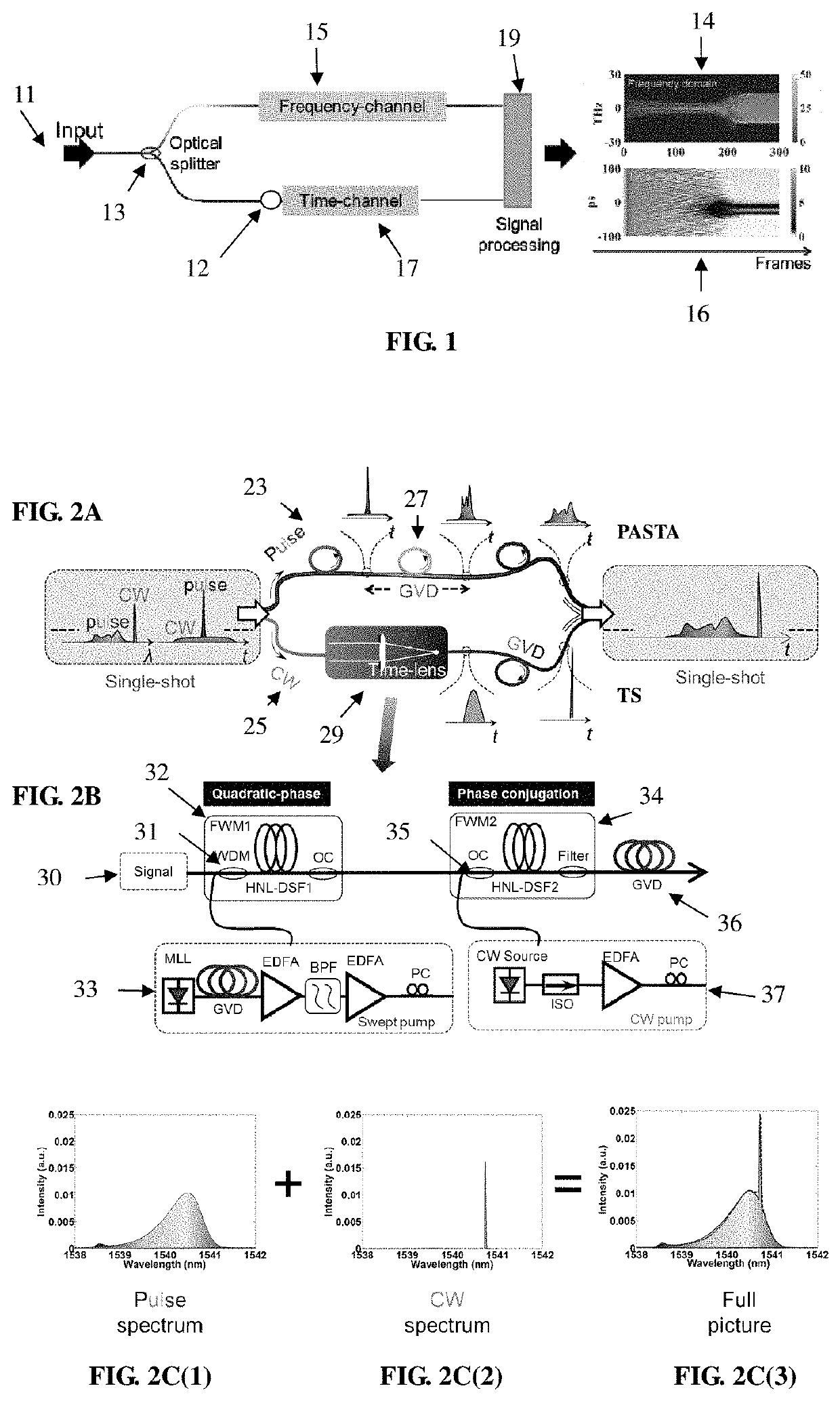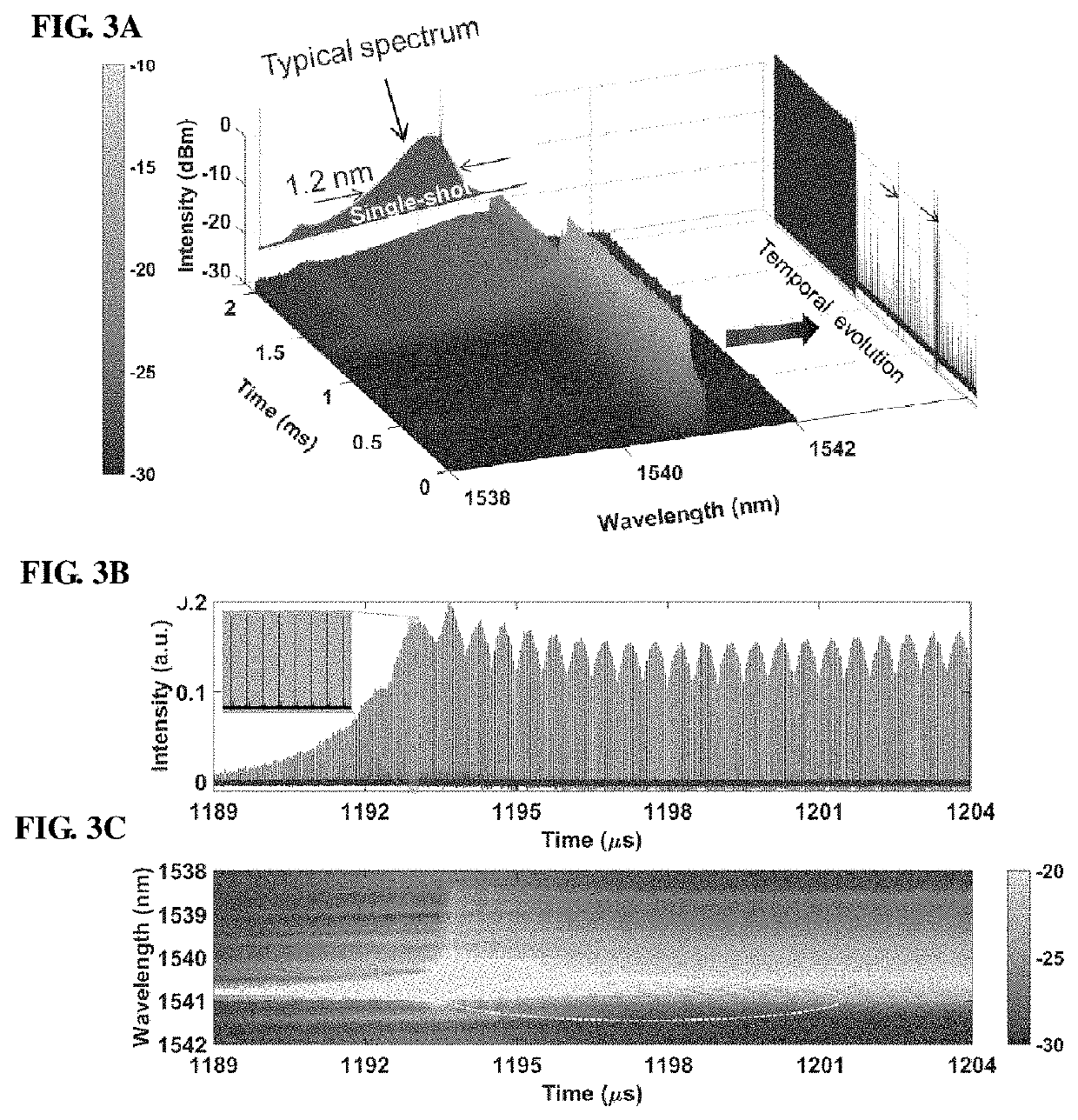Real-time optical spectro-temporal analyzer and method
a real-time optical and spectro-temporal analyzer technology, applied in the direction of optical radiation measurement, instruments, spectrometry/spectrophotometry/monochromators, etc., can solve the problem that the tss spectroscopy (tss) is invalid for continuous-wave (cw)/quasi-cw signals, and the output is drastic, so as to facilitate the comprehensive study of various complex phenomena and the understanding of complex nonlinear dynamics
- Summary
- Abstract
- Description
- Claims
- Application Information
AI Technical Summary
Benefits of technology
Problems solved by technology
Method used
Image
Examples
Embodiment Construction
[0020]FIG. 1 shows an overview of a versatile ROSTA system and method according to an exemplary embodiment of the present invention. Basically, the optical signal is simultaneously diagnosed in two different domains, i.e., frequency domain / channel and time domain / channel. Then, a comprehensive picture of the spectro-temporal information of the optical signal is obtained through data processing.
[0021]An optical signal is launched into the ROSTA system through a fiber tap coupler at input 11. The signal is passed to an optical splitter 13 which directs part of the signal to a frequency channel 15 and part to a time channel 17. Thus, ROSTA captures the non-repeated dynamic event in both time and frequency domains. In the time domain, ROSTA directly monitors the intensity evolution through a photodiode (PD) 12. In the Frequency Domain, ROSTA captures the spectral information with two sub-channels specified for quasi-CW and short-pulse components, respectively. The frequency and time dom...
PUM
 Login to View More
Login to View More Abstract
Description
Claims
Application Information
 Login to View More
Login to View More - R&D
- Intellectual Property
- Life Sciences
- Materials
- Tech Scout
- Unparalleled Data Quality
- Higher Quality Content
- 60% Fewer Hallucinations
Browse by: Latest US Patents, China's latest patents, Technical Efficacy Thesaurus, Application Domain, Technology Topic, Popular Technical Reports.
© 2025 PatSnap. All rights reserved.Legal|Privacy policy|Modern Slavery Act Transparency Statement|Sitemap|About US| Contact US: help@patsnap.com


